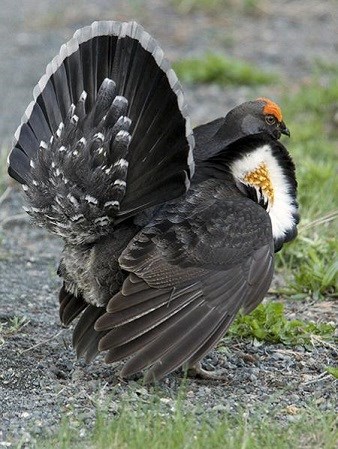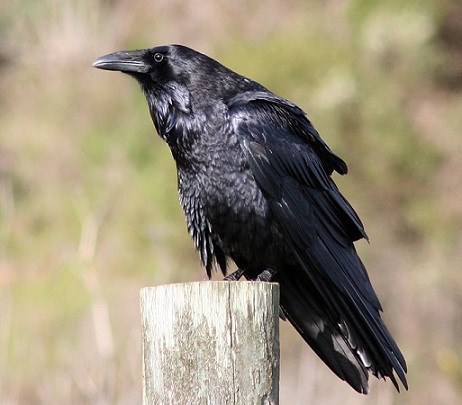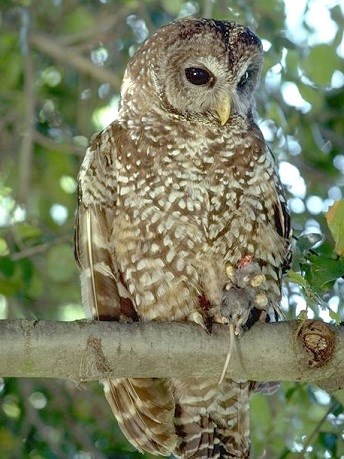Birds of Oregon Caves: A Vital Part of the Forest EcosystemAt first glance, the birds at Oregon Caves may seem similar—perhaps just fleeting flashes of color or swift movements among the trees. However, each species plays a unique and important role in maintaining the health and balance of the forest ecosystem. From the vibrant colors of migratory birds to the subtle beauty of year-round residents, the birdlife at Oregon Caves contributes to the park's biodiversity in significant ways. The park is home to around 130 species of land birds, including migratory species that breed at Oregon Caves, others that pass through during migration, and a variety of birds that reside here year-round. Below are some examples of the fascinating species you might encounter during your visit to Oregon Caves. 
NPS Steller's Jay (Cyanocitta stelleri)The Steller's jay, a large and striking songbird, was named after the German naturalist Georg W. Steller, who first discovered the species on an Alaskan island in 1741. These birds are commonly found in coniferous and coniferous-deciduous forests, usually at elevations between 3,000 and 10,000 feet. Steller's jays are opportunistic ground foragers, meaning they will eat a wide variety of foods. Their diet includes insects, seeds, berries, nuts, small animals, and even the eggs and nestlings of other birds. They are also known to scavenge garbage and unguarded human food, making them regular visitors to campsites and picnic areas. Known for their intelligence, Steller's jays are excellent mimics. They can imitate the sounds of other birds, as well as animals like cats and dogs, and even mechanical objects, showcasing their remarkable vocal versatility. 
NPS Sooty Grouse (Dendragapus fuliginosus)The Sooty Grouse, formerly known as the Blue Grouse, is a hardy species perfectly adapted to life in the mountainous forests of Oregon Caves. In the summer months, their diet includes insects, seeds, and fruits, but one of their most remarkable adaptations is their ability to digest conifer needles, a food source that is plentiful in the forest yet difficult for most animals to process. In late summer, Sooty Grouse feed on vaccinium, a plant related to blueberries and huckleberries that thrives in fire-adapted subalpine environments. These birds play a crucial role in dispersing the plant's seeds. As they consume vaccinium, the seeds pass through their digestive system and are deposited in their droppings, where they receive a natural boost of fertilizer, helping the plants propagate and maintain a healthy ecosystem. 
NPS Common Raven (Corvus corax)The raven, a large-bodied black bird known for its intelligence, is one of the most widespread and adaptable birds across western and northern North America. Ravens can thrive in a variety of environments, from dense forests to open grasslands, thanks to their omnivorous diet. They eat a wide range of foods, including carrion (dead animals), nuts, berries, small animals, and even human garbage, making them highly opportunistic feeders. Ravens are regarded as one of the most intelligent bird species in the world. They have been known to solve complex puzzles for food rewards, demonstrating their impressive problem-solving abilities. Ravens also engage in playful behaviors—young birds have been observed dropping sticks mid-flight and swooping down to catch them, much like a game of catch. Additionally, some ravens store food when they come across an abundant supply, showcasing their forward-thinking behavior. Like the Steller's jay, ravens are accomplished mimics. They can imitate a wide range of sounds, including the calls of other animals and mechanical noises, and some ravens can even replicate the human voice. These traits make the raven not only a survivor but also one of the most fascinating birds in the animal kingdom. 
NPS Northern Spotted Owl (Strix occidentalis)The Northern Spotted Owl is a nocturnal predator that primarily hunts small mammals, such as flying squirrels and woodrats. It thrives in expansive old-growth forests with complex, multilayered understories, much like the forested habitat surrounding Oregon Caves. These ancient forests provide the perfect environment for the owl to hunt and nest, relying on the stability and complexity of the ecosystem. Listed as Threatened by the U.S. Fish and Wildlife Service, the Northern Spotted Owl is highly dependent on its habitat. Any significant alterations to its environment, such as deforestation or development, can lead to the owl abandoning the area and a decline in its population. As a habitat-dependent species, the Northern Spotted Owl faces serious threats from habitat destruction, which has contributed to its diminishing numbers. The designation of Oregon Caves as a national monument and preserve plays a crucial role in protecting this species by safeguarding its forest habitat from deforestation and human encroachment. |
Last updated: September 5, 2024
